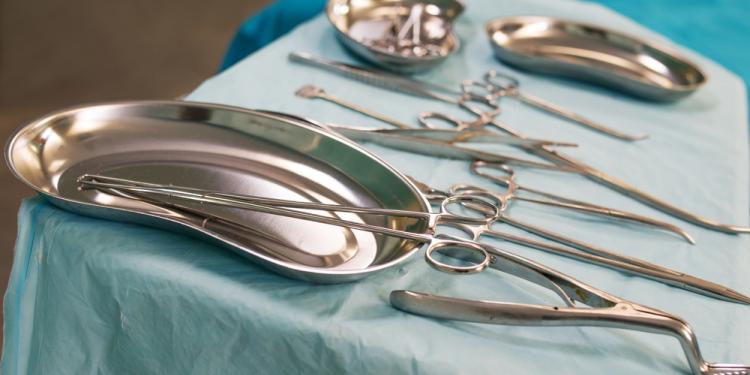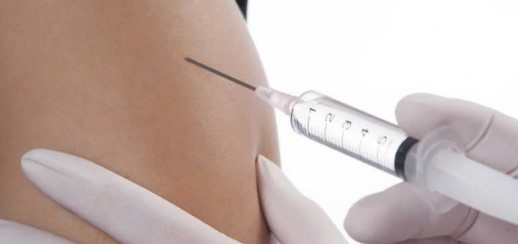Abortion Methods: Dilation & Curettage (D&C Abortion)
By AnneMarie with Why Pro-Life?
January 16, 2019
What is a D&C?
A D&C is a dilation & curettage. The cervix is dilated and a long, sharp, spoon-shaped instrument called a curette is used to scrape the inside of the uterus. Sometimes a D&C is done after a baby dies in a miscarriage but the woman does not go into labor on her own. Other times, a D&C is done to take a sample of uterine tissue to diagnose problems like polyps or fibroids. A D&C abortion may be done up to 13 weeks after the woman’s last known menstrual period. (1)
What Percentage of Abortions are D&Cs?
The Centers for Disease Control (CDC) collect abortion data each year. The results of their data collection are available online through 2014.(2) Abortion data since 2014 have not yet been published. All 50 states plus several large cities (like Washington D.C. and New York City) have the option to report their data to the CDC each year or not. For 2014, California, Maryland, and New Hampshire abortion numbers were not reported. In the CDC report, abortion methods are classified as surgical or medical (medication). Exactly how many surgical abortions were D&Cs was not reported.
What happens during a D&C?
Dilation
A D&C usually takes place in the abortion clinic, and rarely at a hospital. Before the abortion, the cervix must be dilated so that the abortion doctor can get the curette inside, and so that the fetal body parts can be taken out. Dilating the cervix happens in one of two ways. The first way is to use laminaria. Laminaria are long, slender rods of sterilized seaweed that swell by soaking up amniotic fluid. This causes the cervix to open or dilate.
The second way to dilate the cervix is with medications, most commonly one called Misoprostol or Cytotec. Cytotec is taken either orally as a pill or vaginally. This process of dilation may take a few hours or a few days.
Day Of Preparation
The woman will have to stop eating and drinking a certain amount of time before the abortion. The prep work also includes a pregnancy test, blood tests, physical exam, testing for sexually transmitted infections, and usually an ultrasound. The ultrasound confirms that the woman is pregnant and that she does not have an ectopic pregnancy. An ectopic pregnancy is when the fertilized egg implants outside of the uterus, also known as the womb. An ectopic pregnancy can be dangerous because often the fertilized egg implants inside a fallopian tube. As it grows, the fallopian tube can burst. This can cause life-threatening bleeding for the mother.
Procedure
After the ultrasound, the woman lies down on the exam table with her feet up in stirrups as for a pelvic exam. The abortion doctor uses tools to separate the walls of her vagina, to numb her cervix, and to hold the cervix in position for the abortion to happen. The woman will be given some type of anesthesia to keep her relaxed, or even asleep, throughout the abortion. The cervix will be cleaned with a solution to decrease the likelihood of infection. (3)
Sometimes, the abortion doctor suctions the fetal body parts out of the uterus before using the curette. Then, the doctor will scrape all the surfaces inside the uterus with the curette, a long, sharp, spoon-shaped tool. The fetal body parts and other contents of the uterus will be put in a tray or other container to be counted. If the abortion doctor leaves any body parts behind, they can cause life-threatening infection or bleeding for the mother.
Monitoring After the Abortion
The woman is monitored at the abortion clinic for up to several hours after the abortion, until the anesthesia wears off. Her heart rate, temperature, oxygen level, and blood pressure will be checked occasionally during this time. She usually has to take a few days off of work or regular activities due to fatigue, cramping, bleeding, and pain. She may be given a prescription for pain pills, or she may take over-the-counter medications like Ibuprofen. (4)
At what Point does the Fetus Die during the Abortion?
The fetus may die when the curette scrapes it, or when it is in the suction catheter. Or, it may die after it has been suctioned out and is in a jar or other medical waste container. Sometimes the abortion doctor needs to use forceps or some other medical instrument if a body part like a leg or arm gets stuck in the suction catheter.
What are the Side Effects or Complications of a D&C?
- Injury to the cervix or uterus leading to preterm labor or miscarriage in future pregnancies(5)
- Injury to the bladder or bowel or other organs caused by the curette breaking through the wall of the uterus(6)
- Asherman syndrome(7)– bands of scar tissue form inside the uterus. This can stop a woman from having cycles if scar tissue blocks the exit of blood from the uterus. It can also lead to infertility, or to complications during future pregnancies like miscarriage or placenta previa
The World Health Organization notes that compared to suction abortion D&Cs are more painful to women, and have 2-3 times higher complication rates. (8)
How often do Complications occur?
Overall, the rate of serious complications from a D&C is directly related to how experienced the abortionist is. Risk of perforation, or poking a hole in the uterus, leading to heavy bleeding that requires a blood transfusion and hospitalization is higher for an abortion D&C than for a diagnostic D&C. This is because current or recent pregnancy makes the uterine tissue more likely to tear.
In a recent study, women who had had a D&C were 29% more likely to have a baby born pre-term, meaning before 37 weeks. Women who had had a D&C were 69% more likely to have a baby born very pre-term. Very pre-term means born before 32 weeks, when a baby is much more likely to have serious, lifelong brain, heart, lung, or other problems.
Researchers say that this is because in future pregnancies the cervix “remembers” being forced open for the abortion and starts to open earlier on its own. Another reason for pre-term birth could be that the cervix’s natural antibacterial properties are damaged, which makes the woman more likely to have an internal infection. Internal infections of the reproductive system are a pre-term birth risk factor.(9) (10) (11) Risk of preterm birth after D&C increases if a woman has more than one D&C. (12)
Want to be more involved in the fight against abortion? See out Civic Action Page where you can find suggestions on how to help!







